and since I was going to have rice, I thought I would have some torikatsu, chicken cutlet for those who are wondering. This would be a break from the ridiculous amount of red meat I ate last week. I do a mean katsu. I really learned a lot about preparing tonkatsu (pork cutlet) while working at Kobe Restaurant in El Cerrito, where Mieko Pollard showed me a few tricks. Along the way, I picked up a few more and this is what comes out.
First off, the rice, as the rice is the most crucial thing, a note about what I consider to be the perfect rice. I prefer my heritage rice, the short grained glutinous rice common throughout the modern Japanese table, I like it to be a little on the moist side with a clean translucent surface. This is my process for excellent sushi rice. And I can see no reason, if I can make rice good enough for sushi preparation that I should not do it right. First off, I like the use the best rice I can afford. It makes a difference. The newer hybrids like koshihikari are really great.
I wash the rice thoroughly and through several washes. Below, you can see the difference between the first wash and the fifth wash in terms of the water clarity. This is important as a lot of this is starch, either added to insure the rice stays separate and dry, or worn from the grain. Leave this stuff in, and you cannot avoid gummy steamed rice.
As is clear here, the difference between washed and unwashed is clear. In truth, it is not just washing, when the water is placed in a bowl with water, it is agitated pretty thoroughly and with purpose. It is not just swished about, you are trying to use the water and friction between the grains to polish the rice and complete the bran removal process. You hands should be soft and silky after doing the rice. Here the rice is, draining in the colander after the last rinse, if I had thought of it, I would have backlit the shot to show how translucent the rice is at this stage.
From here, the rice is soaked in clean water for 1 hour if it is new rice, and up to 6 hours if it is old rice. I do not suggest old rice, it just does not taste as good. How to get good rice...well, I find that shopping at stores carry a lot of rice and have a regular clientele will have the best rice, and I buy small packages, to insure turnover at home. Here is the rice ready in the pot.
(On Edit) Doh! I left off how much water to cook the rice in. The way I do it is to put the rice into the pot I am going to cook it in (Doh! I left that off too, more on the pot in a minute) anyways, I put the rice in the cooking pot, level it out and add water until it is covered by one inch of water for 2 measuring cups of rice. Another way to do this is to use the rule of equal parts water to rice, plus 1/2 part water for the pot. I simply always make two to two and a half cups of uncooked rice and add water until it touches the line on my index finger first joint.
In terms of the pot, as you might be able to tell, I prefer a non-stick pan, heavy aluminum sides and a clad bottom. My pan of choice is Analon with a glass lid, so I can peek without opening the lid. I prefer a sauce pan with vertical sides, 8 to 9 inch diameter and 6 to 7 inches deep.
The pot is placed on high heat to bring to a boil, I prefer to start with warm water for the soak, to keep the process of bringing to a boil as short as possible. Once the water comes to a moderate boil, let it boil uncovered for 4 minutes, then reduce heat to low and cover. It needs to cook for 15 to 17 minutes, then turn off the heat. Do not uncover, it must sit covered for at least 20 minutes. This will result in excellent rice suitable for serving plain, or for preparing for sushi or onigiri. It sure was good with the chicken, next post please.

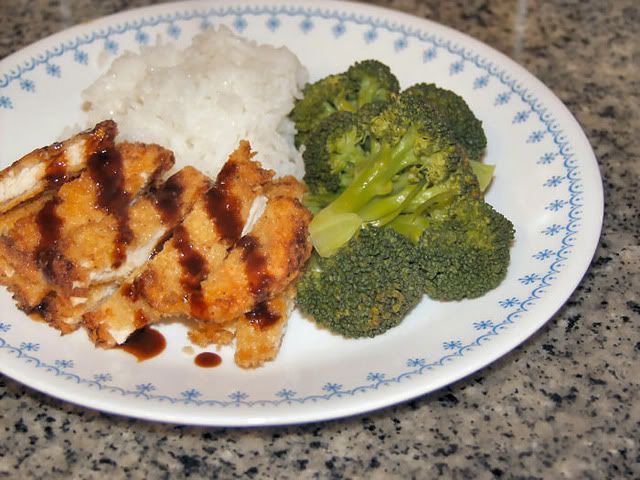
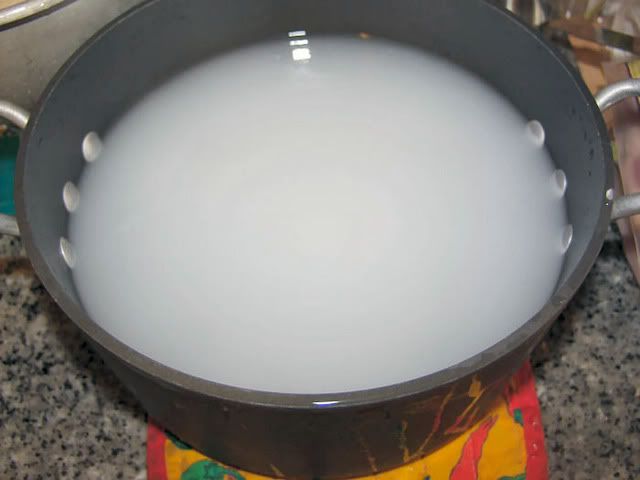
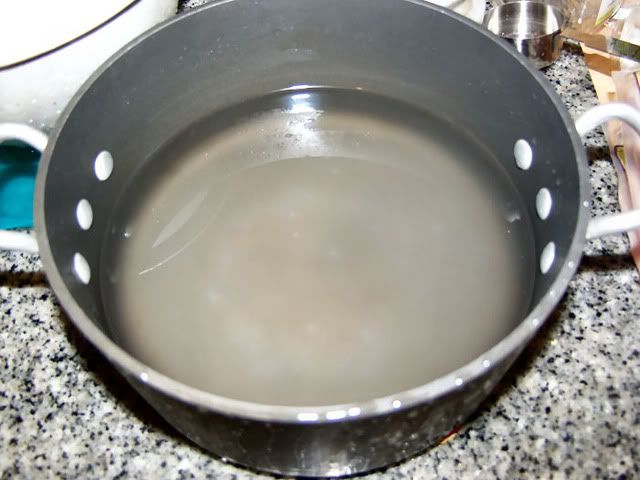
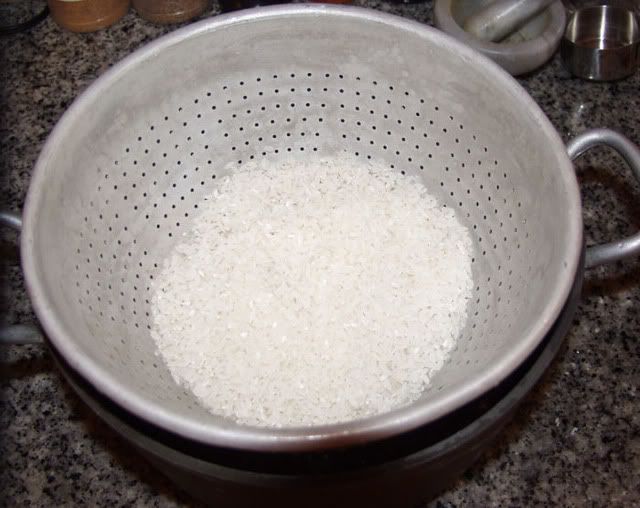
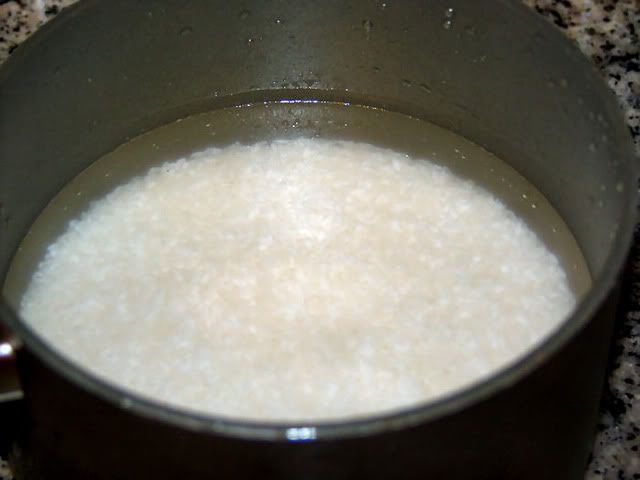
Thanks for the rice lesson. I'm going to give it a try.
ReplyDeleteIt takes a little practice and I just now realize, I left something out. I better edit.
ReplyDelete